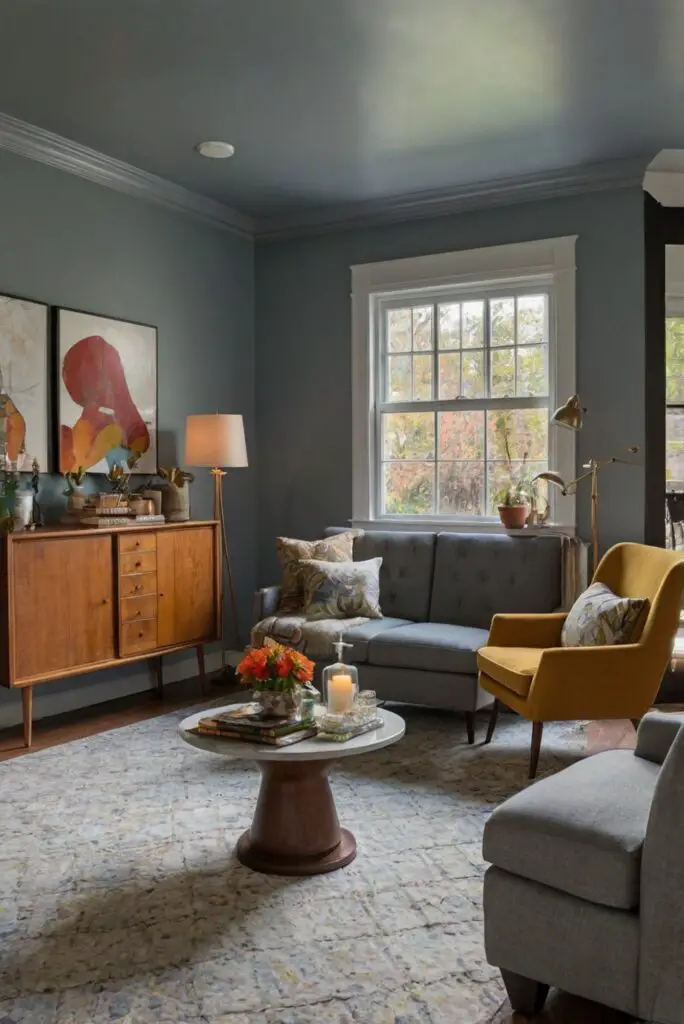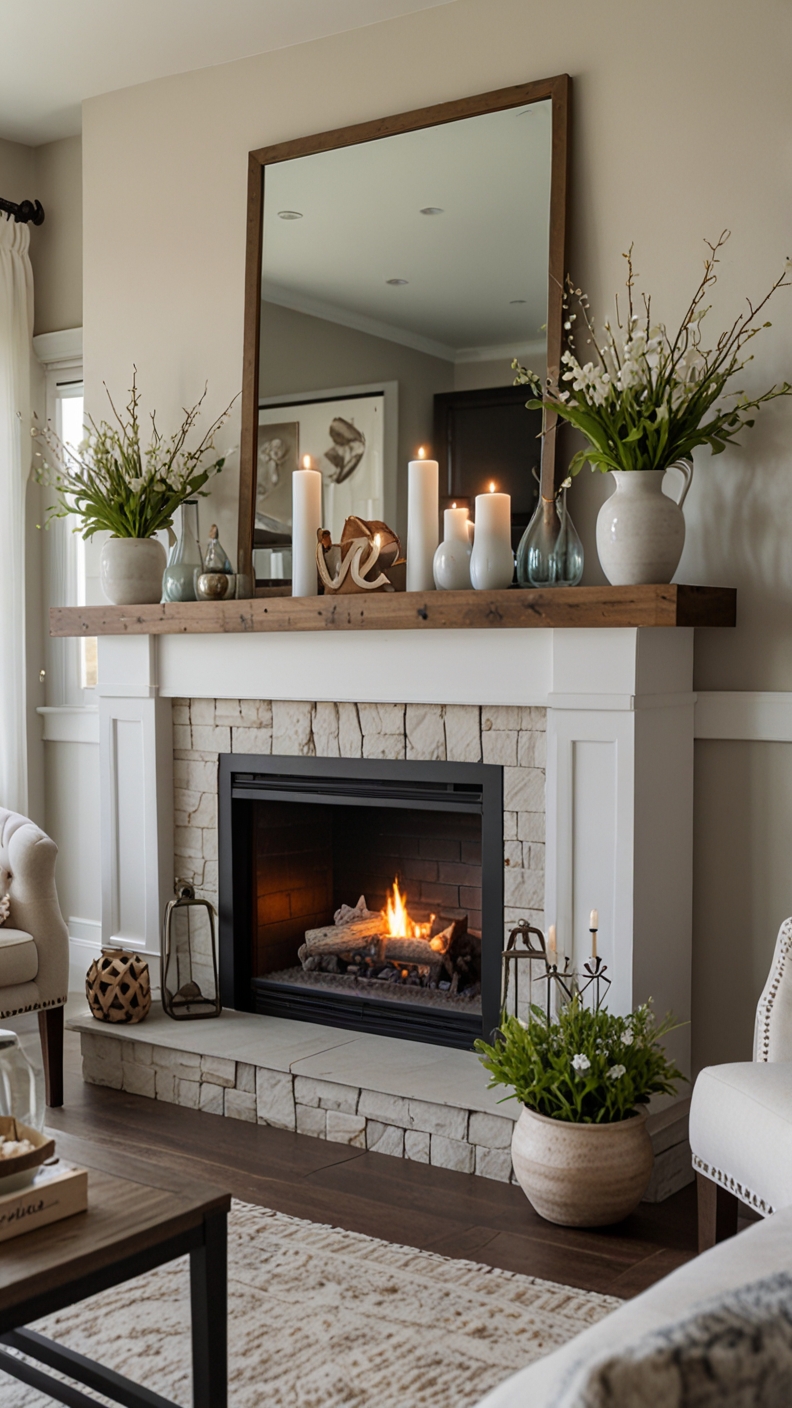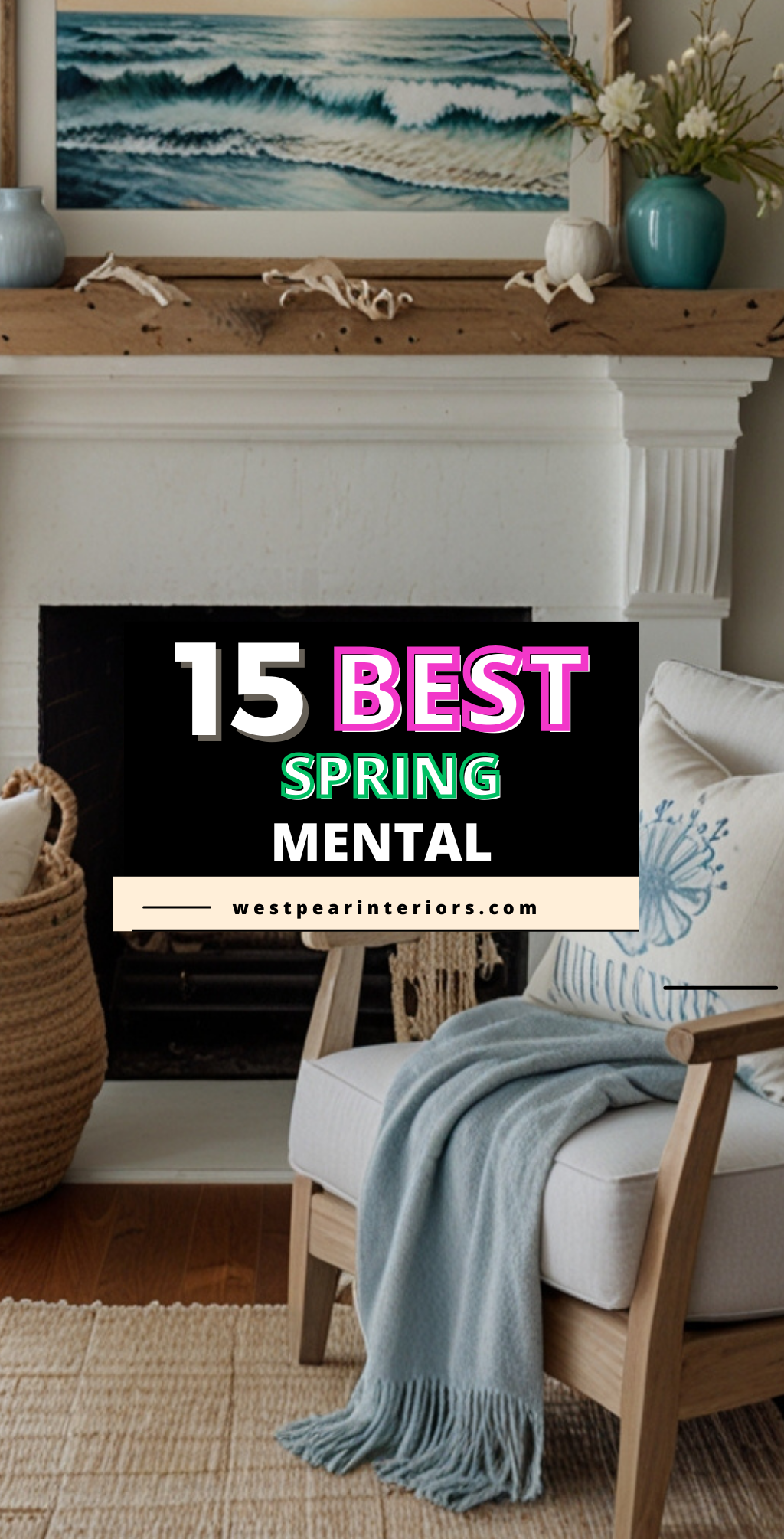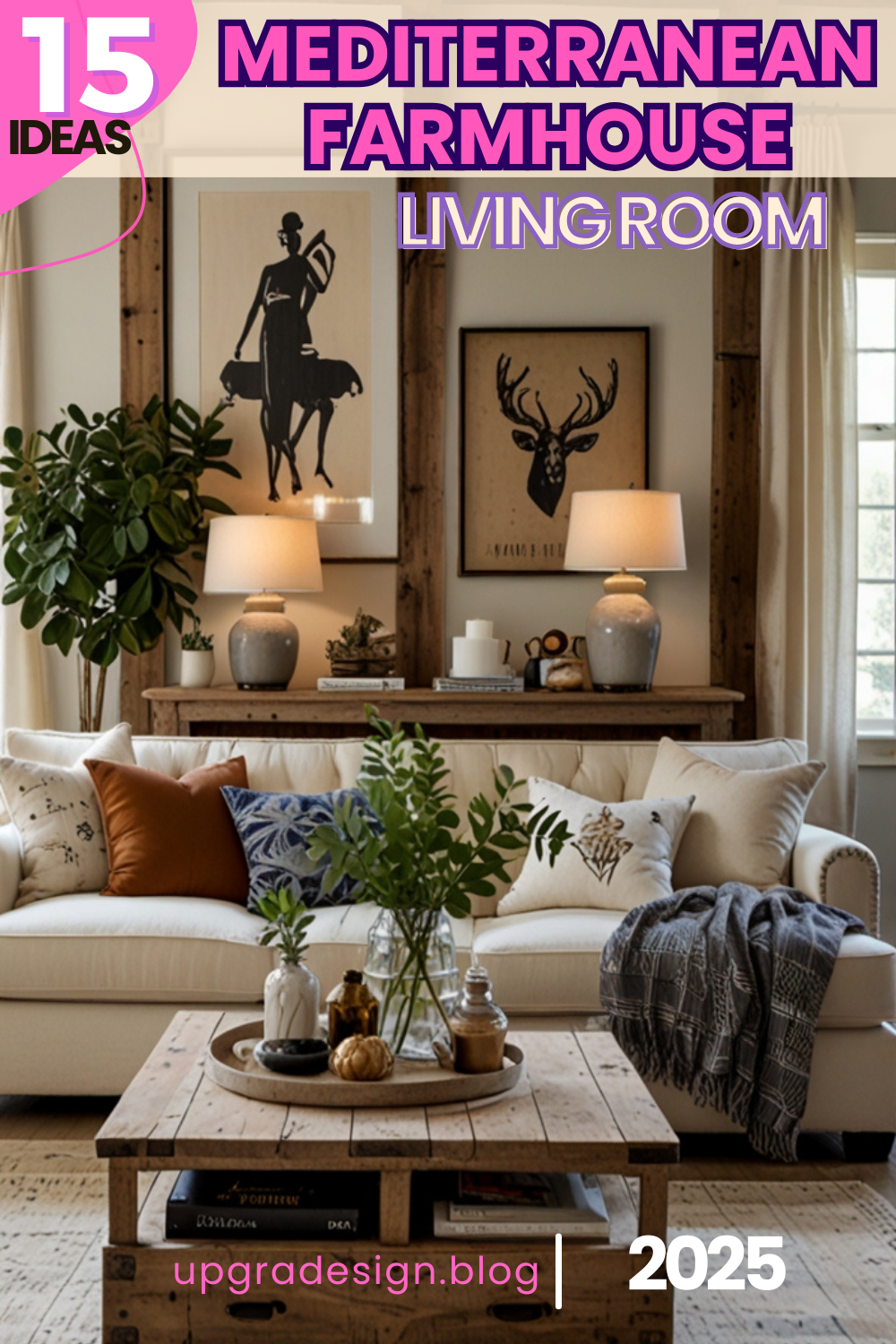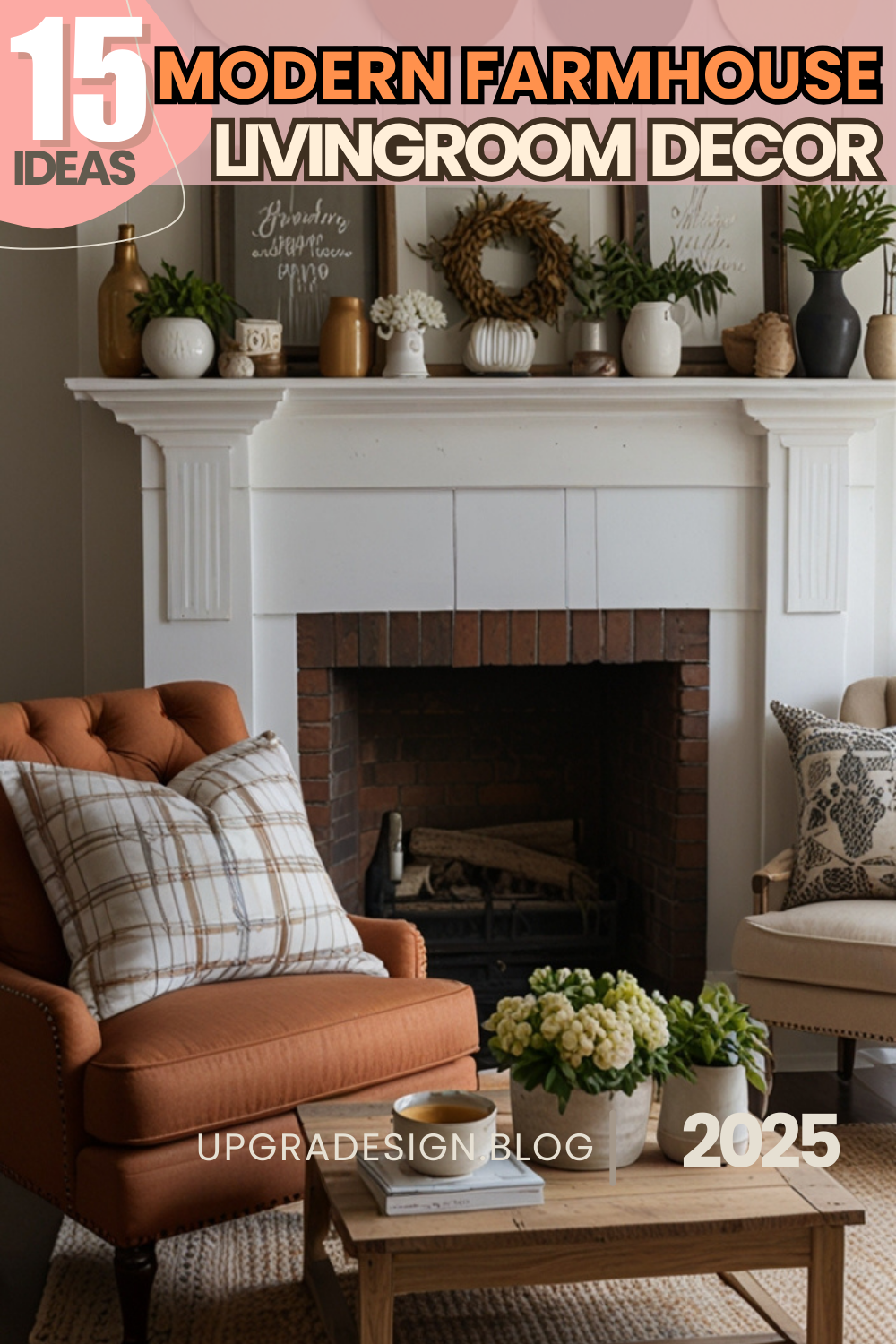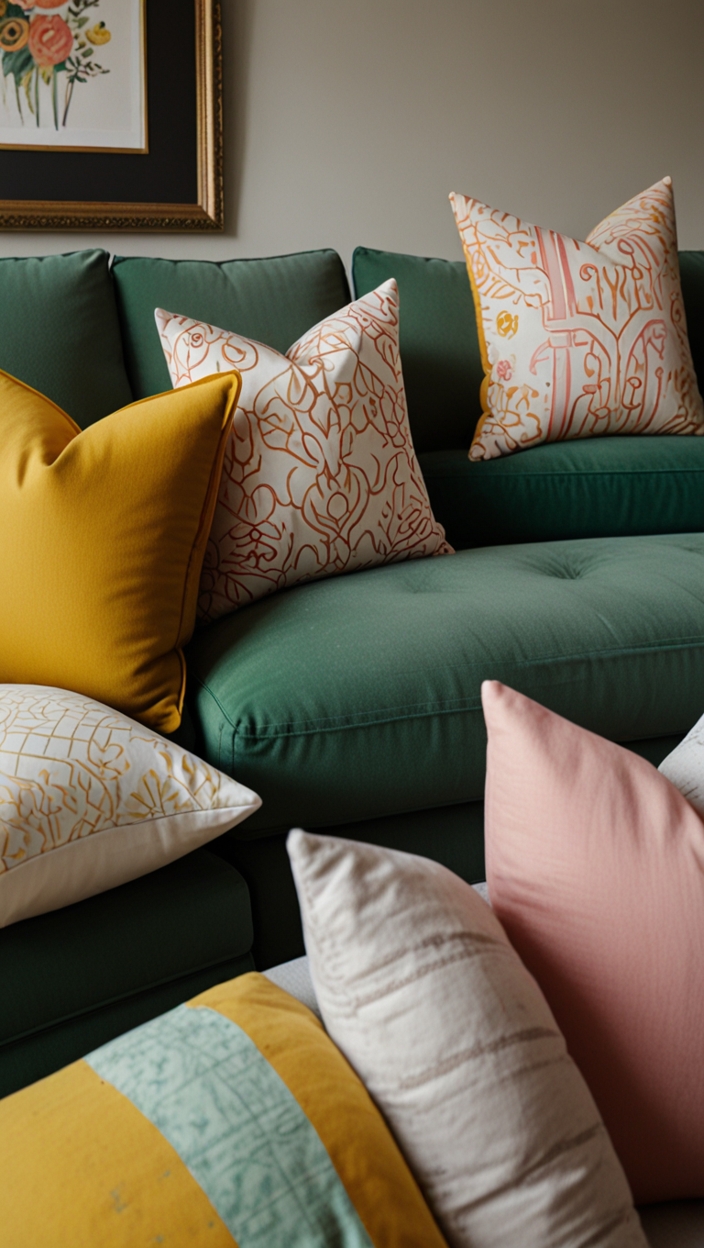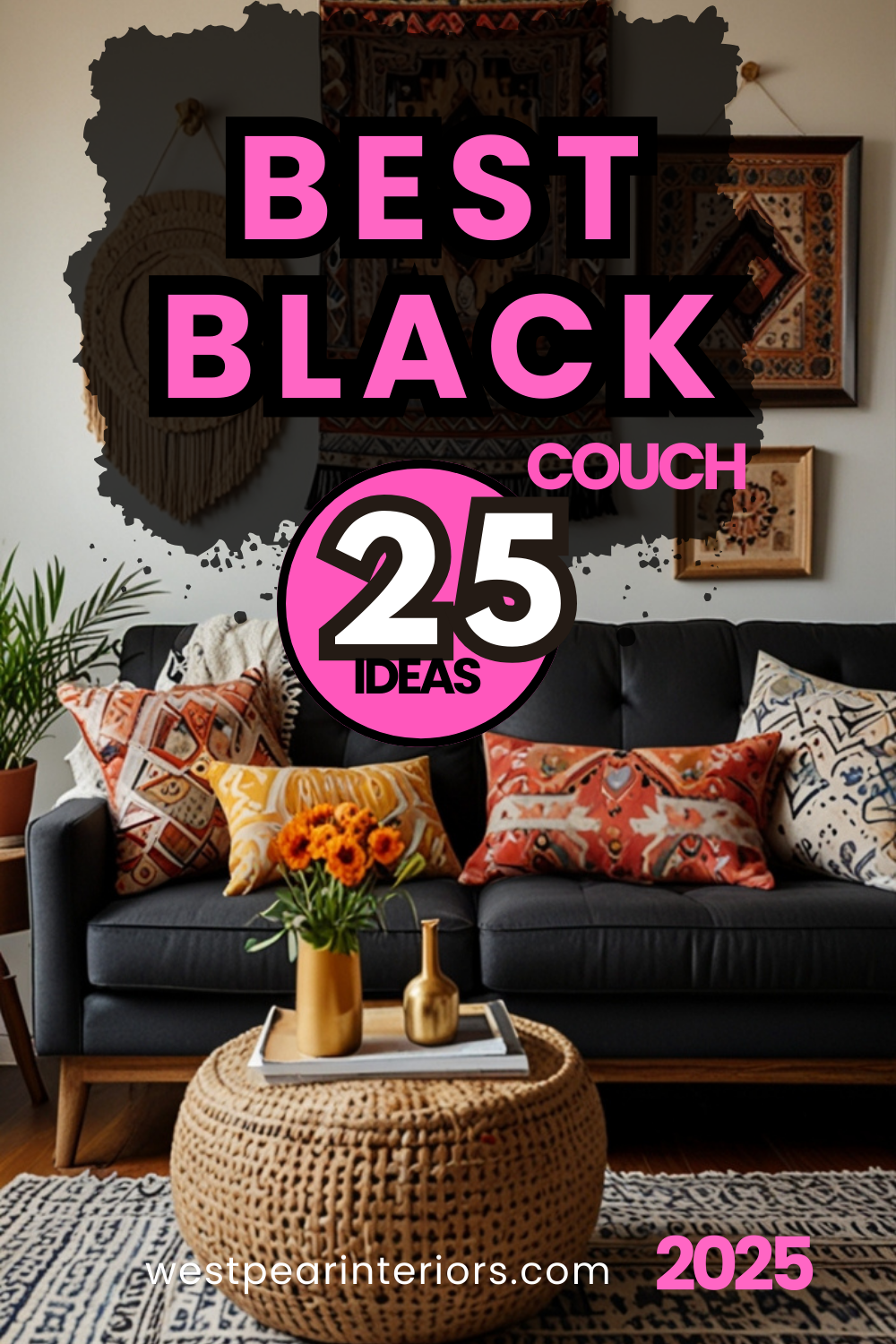Looking to revamp your eclectic living room? Discover the best color schemes that will elevate your design game. Embark on a daily journey with an interior designer for ultimate inspiration.
**
What Are the Best Color Schemes for a Eclectic Living Room?
**
My Lovely Spring Paint for 2025
Ready for a Spring Makeover? Explore the Freshest 2025 Paint Trends!
White Sage/Green SW Pistachio green Soft blue Honeysweet/Orange Pink Sugar Sage Tint BMAs an Amazon Associate, I may earn a commission from qualifying purchases at no extra cost to you.
**
Eclectic living rooms allow for a mix of colors, patterns, and textures. Some of the best color schemes for an eclectic living room include:
**
My fAV Spring DECOR for 2025
Discover Spring’s Best 2025 Decor Combinations – Perfect for Any Room!
Oversized Indoor Plants White Curved Sofas Rugs BOH Brown Cream Moroccan Hype Boho Rug Outdoor Patio Furniture Sets Topfinel Pillow CoversAs an Amazon Associate, I may earn a commission from qualifying purchases at no extra cost to you.
**
1. Bold Jewel Tones: Incorporate rich hues like emerald green, sapphire blue, and amethyst purple to create a vibrant and luxurious space.
**
**
2. Neutral Base with Colorful Accents: Start with a neutral color palette of whites, grays, or beiges, then add pops of bold colors through pillows, rugs, and artwork.
**
**
3. Earthy Tones with Metallic Accents: Combine warm earthy tones like terracotta, mustard yellow, and olive green with metallic accents to add a touch of glamour.
**
What are the key elements to consider when choosing a color scheme for an eclectic living room?
When selecting a color scheme for an eclectic living room, several key elements should be taken into consideration to ensure a harmonious and visually appealing space. The following points are important to keep in mind:
– **Overall Theme**: Decide on the theme or style you want to achieve in your eclectic living room, whether it’s bohemian, vintage, modern, or a mix of different styles.
– **Main Color**: Choose a primary color that will serve as the foundation for your color scheme. This color should be prominent in the room and can be used on walls, large furniture pieces, or prominent decor items.
– **Accent Colors**: Select one or two accent colors to complement the main color. These can be used on smaller furniture pieces, textiles, accessories, or accent walls to add depth and interest to the space.
– **Texture and Pattern**: Consider incorporating a variety of textures and patterns in your color scheme to create visual interest. Mixing different textures and patterns can add dimension to the room and prevent it from looking flat.
– **Natural Light**: Take into account the amount of natural light in the room when choosing colors. Dark colors can make a room feel smaller and cozier, while light colors can create a sense of openness and airiness.
– **Personal Taste**: Ultimately, the color scheme should reflect your personal style and preferences. Choose colors that you love and that make you feel comfortable and happy in your living space.
– **Experimentation**: Don’t be afraid to experiment with different color combinations and hues. Eclectic living rooms often embrace a mix of colors, so feel free to mix and match until you find a combination that speaks to you.
How can I incorporate multiple colors into my eclectic living room without overwhelming the space?
Incorporating multiple colors into an eclectic living room can add character and personality to the space. To prevent the colors from overwhelming the room, consider the following strategies:
– **Color Blocking**: Group colors together in defined areas or sections of the room to create visual interest without overwhelming the space. For example, you can have one wall painted in a bold color while keeping the rest of the walls neutral.
– **Color Balance**: Maintain a balance between bold and neutral colors to prevent the space from feeling too busy. Use neutral colors as a backdrop and introduce pops of bold colors through accents like pillows, rugs, or artwork.
– **Tonal Variation**: Choose colors that are within the same tonal range to create a cohesive look. Mixing different shades and tints of the same color can add depth to the room without creating a clash of colors.
– **Color Accents**: Introduce colors through accent pieces like throw pillows, blankets, curtains, or small decor items. This allows you to experiment with different colors without committing to a major color change.
– **Color Flow**: Ensure that the colors in different areas of the room flow seamlessly to create a cohesive look. Consider how the colors interact with each other as you move through the space to maintain a sense of harmony.
– **White Space**: Don’t forget the power of white or neutral spaces to balance out the multiple colors. White walls or furniture can act as a visual break and prevent the room from feeling too overwhelming.
– **Edit and Simplify**: If you feel that the colors are becoming too overpowering, consider editing your color palette and simplifying the scheme. Remove any colors or elements that feel out of place or clash with the overall look you’re trying to achieve.
Can I mix bold and neutral colors in an eclectic living room color scheme?
Yes, incorporating a mix of bold and neutral colors in an eclectic living room color scheme can create a dynamic and balanced look. By combining bold and neutral colors effectively, you can achieve a sophisticated and visually interesting space. Here are some tips for successfully mixing bold and neutral colors:
– **Neutral Base**: Start with a neutral base for your walls, flooring, and larger furniture pieces. Neutral colors like white, beige, gray, or cream can serve as a backdrop for bolder hues and prevent the space from feeling too overwhelming.
– **Statement Pieces**: Use bold colors on statement pieces such as a sofa, accent chair, or rug to add a pop of color and visual interest to the room. This allows you to introduce bold colors without committing to a full room makeover.
– **Color Blocking**: Create visual impact by color blocking with bold and neutral colors. For example, you can paint one wall in a bold color while keeping the other walls neutral, or use bold curtains against a neutral backdrop.
– **Balance and Contrast**: Balance out bold colors with neutral tones to create contrast and prevent the space from feeling too chaotic. Pairing bold colors with neutral shades can highlight the vibrancy of the bold hues while maintaining a sense of harmony.
– **Texture and Pattern**: Incorporate texture and pattern in both bold and neutral colors to add depth and dimension to the room. Mixing textures and patterns can create visual interest and prevent the space from feeling flat or monotonous.
– **Accent Pieces**: Use accent pieces like throw pillows, artwork, or decorative accessories to introduce pops of bold color against a neutral background. This allows you to experiment with different color combinations and easily switch out colors as needed.
– **Personal Style**: Ultimately, the mix of bold and neutral colors should reflect your personal style and preferences. Don’t be afraid to play with color and express your creativity in the space to create a unique and eclectic look.
What are some tips for creating a cohesive color palette in an eclectic living room?
Creating a cohesive color palette in an eclectic living room is essential to ensure that the space feels harmonious and well-designed. Here are some tips for achieving a cohesive color scheme:
– **Color Family**: Choose colors from the same family or color wheel to create a cohesive look. Selecting shades that are adjacent to each other on the color wheel can help ensure that the colors complement each other well.
– **Dominant Color**: Pick a dominant color that will anchor the room and serve as the main color in your palette. This color should be used consistently throughout the space to create a sense of unity.
– **Accent Colors**: Select one or two accent colors to complement the dominant color and add visual interest. These accent colors can be used in smaller doses on furniture, accessories, or decor items to create balance and harmony.
– **Color Distribution**: Distribute the colors proportionally throughout the room to create a balanced look. Avoid concentrating all the bold colors in one area and instead spread them out to achieve a cohesive and integrated design.
– **Layering**: Layer different shades and tones of the same color throughout the room to create depth and dimension. Mixing light and dark variations of a color can add visual interest and prevent the space from feeling flat.
– **Pattern and Texture**: Consider incorporating patterns and textures in your color palette to add richness and complexity to the design. Mixing different textures and patterns in coordinating colors can create a visually appealing and dynamic space.
– **Visual Flow**: Ensure that the colors flow smoothly from one area of the room to another to create a cohesive and connected look. Consider how the colors interact with each other as you move through the space to maintain a sense of harmony.
– **Edit and Edit**: Regularly review your color palette and make adjustments as needed. Remove any colors or elements that feel out of place or disrupt the cohesiveness of the design to maintain a well-curated look.
How important is balance when combining different colors in an eclectic living room?
Balancing different colors in an eclectic living room is crucial to create a harmonious and visually pleasing space. Achieving a sense of balance ensures that the colors work together cohesively and do not overpower or clash with each other. Here’s why balance is important when combining different colors:
– **Visual Harmony**: Balance helps create visual harmony in the room by ensuring that the colors complement each other and work together seamlessly. When colors are balanced, they create a sense of unity and cohesion in the space.
– **Avoid Overwhelming the Senses**: A well-balanced color scheme prevents the room from feeling overwhelming or chaotic. Too many clashing colors can create visual noise and make the space feel busy. Balancing colors helps create a calm and inviting atmosphere.
– **Highlighting Key Elements**: By balancing different colors effectively, you can highlight key elements in the room and draw attention to focal points. Balancing bold and neutral colors can emphasize certain features while creating a sense of flow and continuity.
– **Creating Depth and Dimension**: Balance adds depth and dimension to the room by allowing colors to interact with each other in a harmonious way. By balancing light and dark colors, warm and cool tones, and bold and neutral hues, you can create a dynamic and layered look.
– **Personal Style**: Balancing colors also allows you to express your personal style and preferences effectively. By combining colors in a balanced way that reflects your taste, you can create a space that feels authentic and true to your personality.
– **Enhancing the Eclectic Look**: In an eclectic living room where multiple colors are often used, balance is especially important. Balancing different colors, textures, and patterns can help bring unity to the space and tie together the various design elements for a cohesive and integrated look.
– **Creating a Unified Design**: Overall, balance is essential for creating a unified and well-designed space. Whether you prefer a bold and vibrant color scheme or a more subdued and neutral palette, achieving the right balance of colors is key to creating a space that feels cohesive, inviting, and visually appealing.
Are there certain color combinations that work best in an eclectic living room setting?
In an eclectic living room setting, the possibilities for color combinations are virtually endless, allowing you to mix and match colors in unique and creative ways. While there are no set rules for color combinations in eclectic design, some combinations tend to work particularly well in creating a vibrant and cohesive space. Here are some color combinations that can work best in an eclectic living room setting:
– **Analogous Colors**: Analogous colors are hues that are adjacent to each other on the color wheel, such as blue and green or red and orange. These colors naturally complement each other and create a harmonious and cohesive look in an eclectic space.
– **Complementary Colors**: Complementary colors are opposites on the color wheel, such as blue and orange or green and red. Using complementary colors in an eclectic living room can create a bold and dynamic look with a high level of contrast.
– **Monochromatic Palette**: A monochromatic color scheme involves using different shades, tints, and tones of a single color. This approach can create a sophisticated and cohesive look in an eclectic living room while allowing for variation in intensity and depth.
– **Triadic Colors**: Triadic colors are three hues that are evenly spaced around the color wheel, such as yellow, blue, and red. Using triadic colors in an eclectic space can result in a lively and energetic color scheme with a balanced distribution of color.
– **Neutral with Pops of Color**: Pairing a neutral base with pops of bright, bold colors can add excitement and personality to an eclectic living room. Neutral colors like white, beige, or gray provide a versatile backdrop for colorful accents to stand out.
– **Warm and Cool Tones**: Mixing warm tones like red, orange, and yellow with cool tones like blue, green, and purple can create a harmonious balance in an eclectic living room. The contrast between warm and cool hues adds visual interest and depth to the space.
– **Jewel Tones**: Jewel tones such as emerald green, sapphire blue, ruby red, and amethyst purple can bring richness and sophistication to an eclectic living room. These vibrant colors create a luxurious and inviting atmosphere when mixed together.
– **Pastel Palette**: Soft pastel colors like mint green, blush pink, and lavender can create a serene and calming ambiance in an eclectic living room. Pastels work well with a variety of styles and can add a playful and whimsical touch to the space.
– **Bold Black and White**: Incorporating a striking combination of black and white in an eclectic living room can create a timeless and dramatic look. These contrasting colors can be paired with pops of vibrant hues to add a modern and eclectic twist to the design.
How can I ensure that my eclectic living room color scheme reflects my personal style and tastes?
To ensure that your eclectic living room color scheme reflects your personal style and tastes, it’s important to approach the design process thoughtfully and intentionally. Here are some tips to help you create a color scheme that aligns with your preferences:
– **Start with Inspiration**: Begin by gathering inspiration from sources such as design magazines, websites, blogs, or social media platforms. Save images that resonate with you and reflect the color palettes you are drawn to.
– **Identify Your Color Preferences**: Consider the colors that you naturally gravitate towards and feel comfortable with. Whether you prefer bold and vibrant hues or soft and neutral tones, choosing colors that you love will ensure that your living room reflects your personal style.
– **Consider the Mood**: Think about the mood or atmosphere you want to create in your living room. Whether you aim for a cozy and intimate space or a bright and energetic environment, selecting colors that evoke the desired mood is essential.
– **Personalize with Accents**: Use accent pieces like pillows, throws, artwork, and decorative accessories to infuse your personal style into the color scheme. These accents can be easily swapped out or updated to reflect your changing tastes over time.
– **Mix Old and New**: Incorporate a mix of old and new elements in your living room decor to reflect your eclectic style. Blend vintage finds with modern pieces and experiment with different colors, textures, and patterns to create a unique and personalized space.
– **Consider Your Interests**: Draw inspiration from your hobbies, interests, travels, and experiences to inform your color choices. Incorporating colors that hold personal significance to you can make your living room feel more authentic and meaningful.
– **Seek Professional Advice**: If you’re unsure about how to translate your personal style into a cohesive color scheme, consider consulting with an interior designer or color expert. A professional can provide guidance and help you create a design that reflects your personality and tastes.
– **Trust Your Instincts**: Ultimately, trust your instincts and intuition when selecting colors for your eclectic living room. Choose colors that make you feel happy, inspired, and comfortable in your space, and don’t be afraid to take creative risks to express your unique style.
Key Takeaways
– **Choosing a color scheme for an eclectic living room involves considering the overall theme, main color, accent colors, texture, natural light, personal taste, and experimentation.
– **To incorporate multiple colors without overwhelming the space, use color blocking, balance bold and neutral colors, vary tonal shades, traffic color accents, create color flow, incorporate white space, and edit when needed.
– **Bold and neutral colors can be mixed in an eclectic living room color scheme by starting with a neutral base, introducing statement pieces, color blocking, balancing and contrasting colors, and reflecting personal style.
– **Creating a cohesive color palette in an eclectic living room includes selecting colors from the same family, choosing a dominant color, adding accent colors, distributing colors proportionally, layering, incorporating pattern and texture, ensuring visual flow, and editing when necessary.
– **Balance is crucial when combining different colors in an eclectic living room to achieve visual harmony, avoid overwhelming the senses, highlight key elements, create depth and dimension, express personal style, enhance the eclectic look, and create a unified design.
– **Color combinations that work best in an eclectic living room setting include analogous colors, complementary colors, monochromatic palettes, triadic colors, neutral with pops of color, warm and cool tones, jewel tones, pastel palettes, and bold black and white.
– **To ensure that your eclectic living room color scheme reflects your personal style and tastes, start with inspiration, identify your color preferences, consider the mood, personalize with accents, mix old and new elements, consider your interests, seek professional advice if needed, and trust your instincts.

